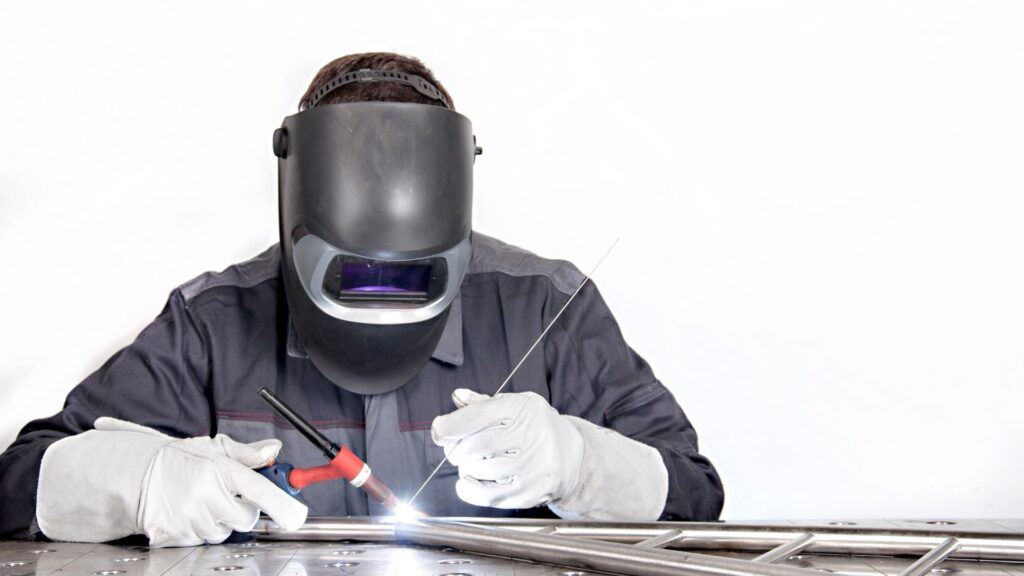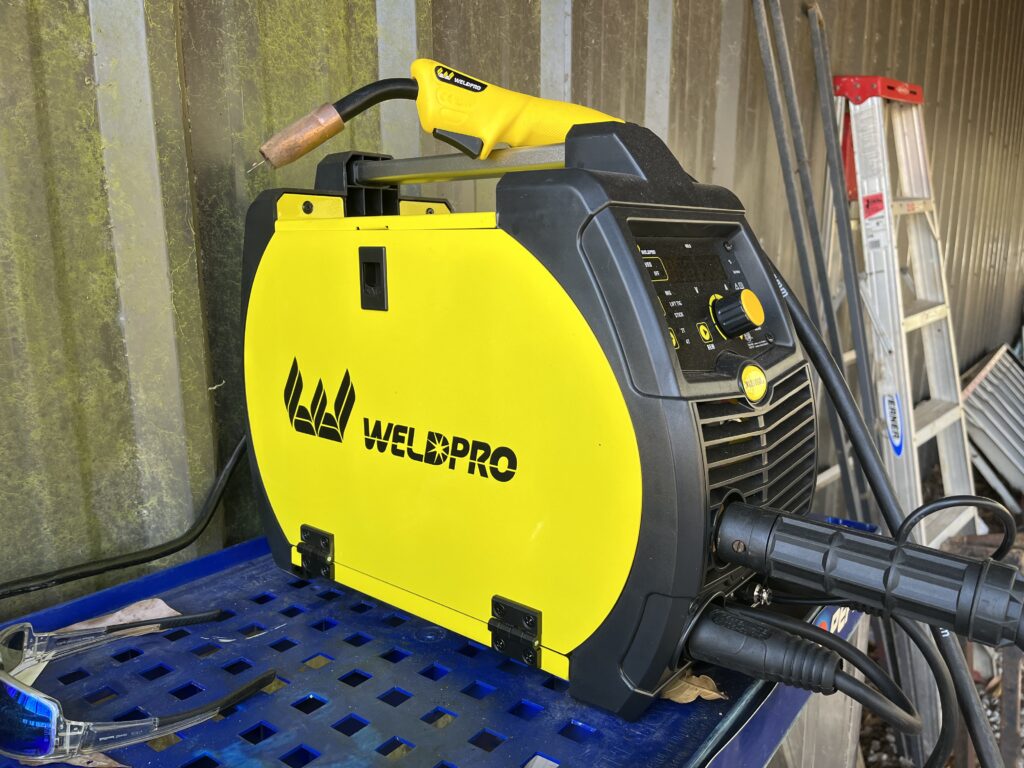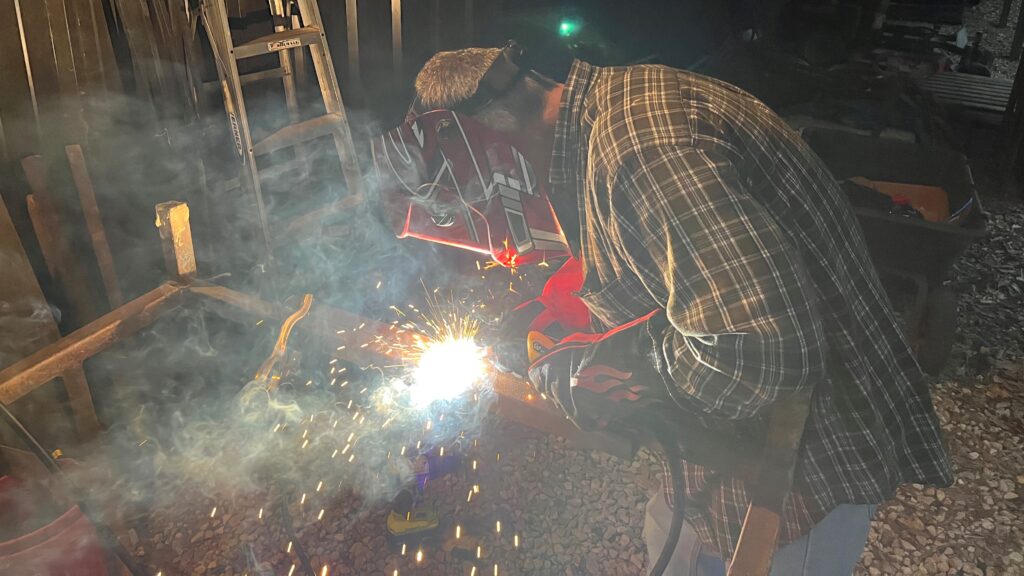Welding aluminum is a tough challenge because of its high thermal conductivity, the risk of trapped hydrogen bubbles in your weld, and weakness caused by an external oxide layer. To ensure your welds are strong and durable, use the correct welding process for the job.
The TIG welding process is one of the best processes for welding aluminum. It produces a high-quality weld, and it is very precise. This makes it the perfect process for welding aluminum. Another excellent process for welding aluminum is MIG welding. This process is very versatile, and you can use it to weld various metals.
Welding aluminum is a process that has to be done with precision and care. If it is not done correctly, you could end up with a mess on your hands. This blog post will discuss the different welding processes that can be used when welding aluminum and which one is the best for the job. Stay tuned!

Contents
Welding Aluminum
Welding aluminum can be tricky, but it’s doable with the proper knowledge and equipment. When welding aluminum, it’s essential to choose the right welder.
There are two main types of welders: TIG welders and MIG welders. TIG welders are better suited for welding thin aluminum pieces, while MIG welders are better suited for thicker aluminum.
It would be best to learn how to adjust your welder to the correct settings for welding aluminum. The welders’ settings will vary depending on the thickness of the aluminum you’re welding and the type of weld you’re using.
Aluminum welding comprises joining two metallic components by fusing both by melting the metals. It is a tough job and requires a lot of precision to form a strong metal alloy.
Welding cannot be done with all types of metals, as some materials, such as stainless steel, are prone to breaking and distorting when overheating. Aluminum Alloys are particularly problematic as it is challenging to know the exact chemical composition of the metal, and they end up being a more significant challenge for welders than the more common iron or steel materials.
When welding aluminum, you must know that this material has a lower melting point and higher conductivity than steel and iron, which can cause burn through in the weld, especially on thinner sheets of aluminum.
However, this material has several benefits, among which we can mention: low corrosion capacity, ease of molding, high strength, high electrical/thermal conductivity, among others.
However, to ensure a safer, more efficient, and long-lasting welding, it is necessary to choose a suitable filler alloy. For this, you must select a more appropriate welding process.
You must also consider material, quality requirements, bead type, appearance, and cost. For these particularities, when choosing which welding method to use, it is crucial to keep in mind all the peculiarities of the material application and the welder’s skill.

What Welding is Best for Aluminum?
TIG (Tungsten Inert Gas) welding is the best method for welding aluminum. A TIG welder can provide more precise welds and is better suited for welding aluminum than other welders.
Primarily because you can adjust the amperage while welding, most TIG welders are equipped with a foot pedal that allows you to adjust the amperage on the go; however, some models incorporate hand controls.
My WeldPro multi-process welder has the handheld adjustment, and I find it works great and is easy to use. Having a current-controlled welding machine is extremely helpful in preventing the workpiece from overheating, which is the leading cause of the burn-through.
Further, TIG welding can be applied to either a thin sheet or thicker aluminum sheets. Although most welders opt for TIG welding, MIG welding can also be used–successfully–to weld aluminum.
MIG welding is a good option when welding thicker aluminum sheets due to the speed of the process and the amount of heat required. The shielding gas chosen should be 100% argon if opting for this process.
However, it is essential to note that since TIG and MIG welding require a separate filler rod, you should choose a welding wire or rod that is as alloyed as the workpieces are and as closely matched as possible.
Why is Aluminum Welding Difficult?
Aluminum welding can be a challenge because of the chemical properties of the metal, and it’s often very thin and can easily be damaged. If you’re just starting out, try welding smaller pieces of aluminum instead of tackling a large project right away.
Aluminum is a non-ferrous metal that has many particularities for welding. For aluminum welding, aspects such as weldability, crack resistance, toughness, mechanical strength, corrosion resistance, the temperature in service, and results of heat treatment and coloring are considered.
When welding aluminum, several negative things can occur:
- Blistering
When welding aluminum, you need to be aware of the potential for hydrogen bubbles. Porosity results from metal contamination. Trapped gases create a bubble-filled weld that becomes weak and can eventually collapse.
It is common for the material to have visible eruptions when it solidifies. This is because aluminum has high thermal conductivity, and when it cools quickly, it is usual for the gas bubbles to get stuck.
- Cooling
The cooling process is an issue when welding aluminum. The oxidized outer and non-oxidized inner layer can cool in different ways (one more slowly and the other more quickly), causing internal stresses to arise (this phenomenon weakens the material and can generate cracks).

How Does Welding Aluminum Differ from Welding Steel?
Steel and aluminum have different chemical and physical properties such as melting point, coefficient of thermal expansion, elastic modulus, etc. In aluminum welding, the definition of the consumable to be used differs from how it is done for the steel and is even simpler.
With steel, the definition of the consumable is basically made by the tensile strength of the base metal. The melting point of aluminum is 660°C, and that of steel is 1371°C, and that is a considerable difference that affects the procedures, types of equipment, and the final welding results.
Another differentiator is the thermal conductivity of aluminum, which is six times that of steel, which can cause a lack of fusion at the beginning of the arc, both in the TIG and MIG processes. For this reason, in many applications, the welding speed of aluminum must be higher than steel.
Aluminum has a lower density. It is lighter than steel (approximately 30% by weight). The thermal expansion of aluminum is twice the expansion of steel and can generate problems in welding associated with its contraction during solidification.
What Welder Do I Need to Weld Aluminum?
Choosing the ideal welder for welding aluminum is not just any machine. To choose the right welder, it is necessary to consider some essential characteristics of the service in question.
Also, if you want great equipment, you have to be willing to invest in it because welding equipment for aluminum is not the cheapest on the market, as it requires more technology.
An aluminum welding machine can be MIG or TIG. Specifically talking about TIG, a process widely used for this type of work, must have the AC option. If it is a DC-only device, it will not be possible to perform this work.
The TIG machine running AC offers clean and accurate soldering. In addition, if the welder is experienced, he will undoubtedly provide a product with an excellent finish.
Can All Welders Weld Aluminum H3?
For aluminum to be versatile and have a wide range of applications and characteristics, it needs different compositions. Several aluminum alloys meet various needs, such as greater hardness or flexibility. Here are some different configurations:
H1–Cold plastically deformed.
H2–Cold plastically deformed and annealed.
H3–Cold plastically deformed and stabilized.
Not every welder can address all the configurations. For example, for aluminum H3, a TIG welder is the best option. The pulse system is the main problem with MIG welders when welding H3 aluminum.
Can you stick weld aluminum?
It’s possible to weld aluminum with a stick welder, but not advisable. A TIG or MIG welder is the preferred method to weld aluminum.
